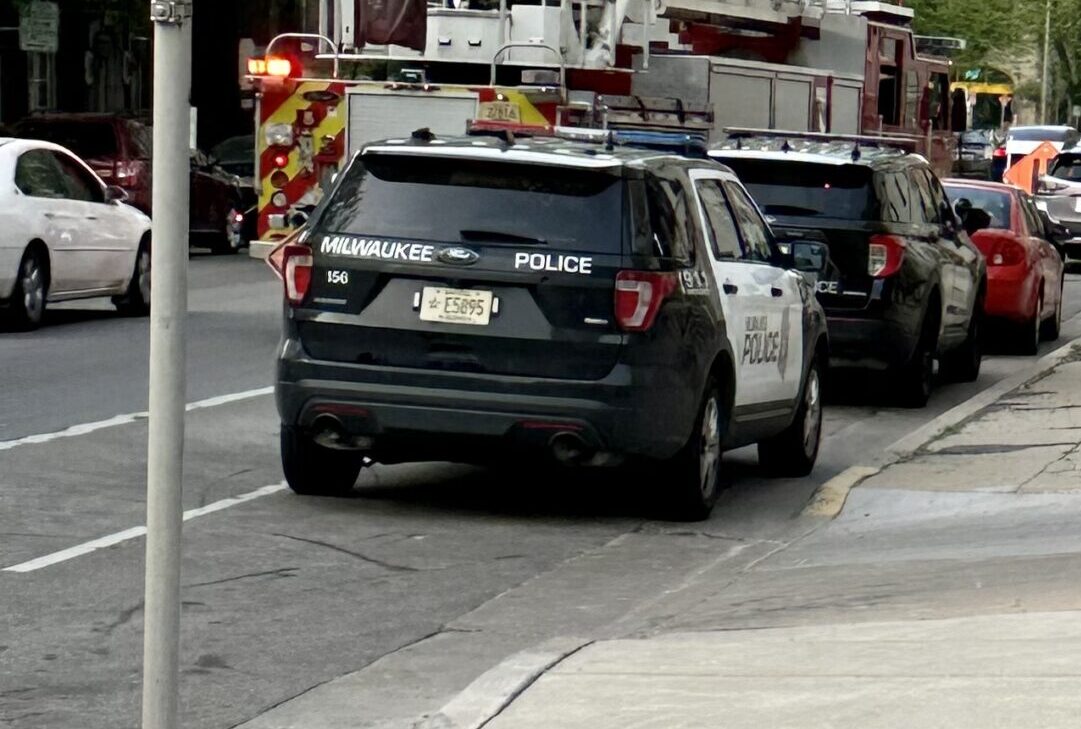Court: Suspect must submit for seizure to occur
By: dmc-admin//July 19, 2006//
 A seizure does not occur for Fourth Amendment purposes until the suspect submits to the officer’s show of authority, the Wisconsin Supreme Court held on July 12.
A seizure does not occur for Fourth Amendment purposes until the suspect submits to the officer’s show of authority, the Wisconsin Supreme Court held on July 12.
In so holding, the court reaffirmed its decision in State v. Kelsey C.R., 2001 WI 54, 243 Wis.2d 422, 626 N.W.2d 777, which adopted the U.S. Supreme Court decision in California v. Hodari D., 499 U.S.621 (1991).
In 2002, City of Kenosha Police Officer David Alfredson was a patrolman in an area near two taverns that was considered a “problem area” because of fights, drinking in cars, littering, and drug use.
|
What the court held Case: State v. Young, No. 2003AP2968-CR Issue: When a suspect fails to submit to a show of police authority, is reasonable suspicion measured at the time of the investigatory stop, or the time the suspect is ultimately subdued? Holding: When the suspect is subdued. To hold otherwise would encourage flight, without deterring unlawful police behavior. Counsel: For Appellant: Askins, Martha K., Madison; For Respondent: Jambois, Robert J., Madison; Kleinmaier, Stephen W., Madison; Zapf, Robert D., Kenosha |
While patrolling the area, he saw an unfamiliar parked car with five people sitting in it. He returned nine minutes later, and the five men were still in the car.
Alfredson stopped his squad in the middle of the street next to the vehicle behind the car, illuminated the car with his spotlight, and turned on his flashing emergency lights; he did not activate his red-and-blue rolling lights.
Before Alfredson could get out of his squad, Charles E. Young exited the car from the rear passenger-side door. In response, Alfredson got out of his car, and told him twice to get back in the car.
Instead, Young started running. Alfredson caught him, and arrested him. Marijuana was found in Young’s coat pocket, and he was charged with possession, resisting arrest, and obstructing an officer.
He moved to suppress the evidence, but Kenosha County Circuit Court Judge Michael Fisher denied the motion. The court of appeals affirmed in a published opinion, 2004 WI App 227, 277 Wis.2d 715, 690 N.W.2d 866.
The Supreme Court accepted review, and affirmed in a decision by Justice David T. Prosser. Justices Louis B. Butler, Jr., and Ann Walsh Bradley wrote dissents, the latter joined by Chief Justice Shirley S. Abrahamson.
After twice noting that the court usually follows the Fourth Amendment jurisprudence of the United States Supreme Court, the court reaffirmed the vitality of Hodari D. in Wisconsin.
The court wrote, “The [U.S. v. Mendenhall, 446 U.S. 544 (1980)] test applies when the subject of police attention is either subdued by force or submits to a show of authority. Where, however, a person flees in response to a show of authority, Hodari D. governs when the seizure occurs.”
The court cited two policy considerations from Hodari D. for support. First, by postponing the moment at which the protection of the exclusionary rule becomes available, Hodari D. encourages compliance with police orders.
Second, the exclusionary rule retains its deterrent effect, because officers expect that their orders will be complied with, and the exclusionary rule will apply.
The court wrote, “Because a police officer cannot know in advance that a suspect will flee or not comply with a show of authority, and because a police officer must presume that people will comply with orders and thus the officer must adhere to the Fourth Amendment to prevent the exclusion of evidence, we fail to see how rejecting Hodari D. will further deter Fourth Amendment violations.”
Applying Hodari D. to the merits, the court held that reasonable suspicion supported an investigatory stop. The court noted that the neighborhood was a “problem area”; that the officer was familiar with the neighborhood; and that the facts — five men lingering in a car for five to ten minutes — was suspicious.
The court wrote, “Although there are innocent explanations for why five people would be sitting in a car for five to 10 minutes, Alfredson was not required to rule out all these potential explanations before initiating his investigation.”
| |
||
|
Related Links Related Article |
||
| |
||
Because the court found no seizure occurred until Young was subdued, the court declined to decide whether the officers’ actions in pulling up behind the car, activating his emergency flashers and pointing a spotlight on the car, constituted a seizure.
In dicta, however, the court suggested that it did not. Noting that the officer did not activate his red-and-blue rolling lights, the court analogized the actions to an officer approaching the car on foot to inquire — an action Young conceded would not constitute a stop and detention.
The Dissents
Justice Butler concurred in the majority opinion, save for that part concluding the evidence was sufficient to support the charge of obstructing an officer.
Butler concluded that the officer’s actions constituted a stop and detention, unsupported by reasonable suspicion, and thus, the third element of obstructing — that the officer was acting with lawful authority — was not satisfied.
Justice Bradley dissented, calling the decision in Hodari D. “infamous,” and arguing that its holding should be rejected.
Click here for Case Analysis.
David Ziemer can be reached by email.
Legal News
- Waukesha man sentenced to 30 years for Sex Trafficking
- 12-year-old shot in Milwaukee Wednesday with ‘serious injuries’
- Milwaukee man convicted of laundering proceeds of business email compromise fraud schemes
- Giuliani, Meadows among 18 indicted in Arizona fake electors case
- Some State Bar diversity participants walk away from program
- Wisconsin court issues arrest warrant ‘in error’ for Minocqua Brewing owner
- Iranian nationals charged cyber campaign targeting U.S. Companies
- Facing mostly white juries, are Milwaukee County defendants of color truly judged by their peers?
- Milwaukee Mayor speaks in D.C. Tuesday at White House water summit
- Chicago man sentenced to prison after being caught with ‘Trump Gun’
- FTC bans non-competes
- Gov. Evers seeks applicants for Dane County Circuit Court
WLJ People
- Power 30 Personal Injury Attorneys – Russell Nicolet
- Power 30 Personal Injury Attorneys – Benjamin Nicolet
- Power 30 Personal Injury Attorneys – Dustin T. Woehl
- Power 30 Personal Injury Attorneys – Katherine Metzger
- Power 30 Personal Injury Attorneys – Joseph Ryan
- Power 30 Personal Injury Attorneys – James M. Ryan
- Power 30 Personal Injury Attorneys – Dana Wachs
- Power 30 Personal Injury Attorneys – Mark L. Thomsen
- Power 30 Personal Injury Attorneys – Matthew Lein
- Power 30 Personal Injury Attorneys – Jeffrey A. Pitman
- Power 30 Personal Injury Attorneys – William Pemberton
- Power 30 Personal Injury Attorneys – Howard S. Sicula











